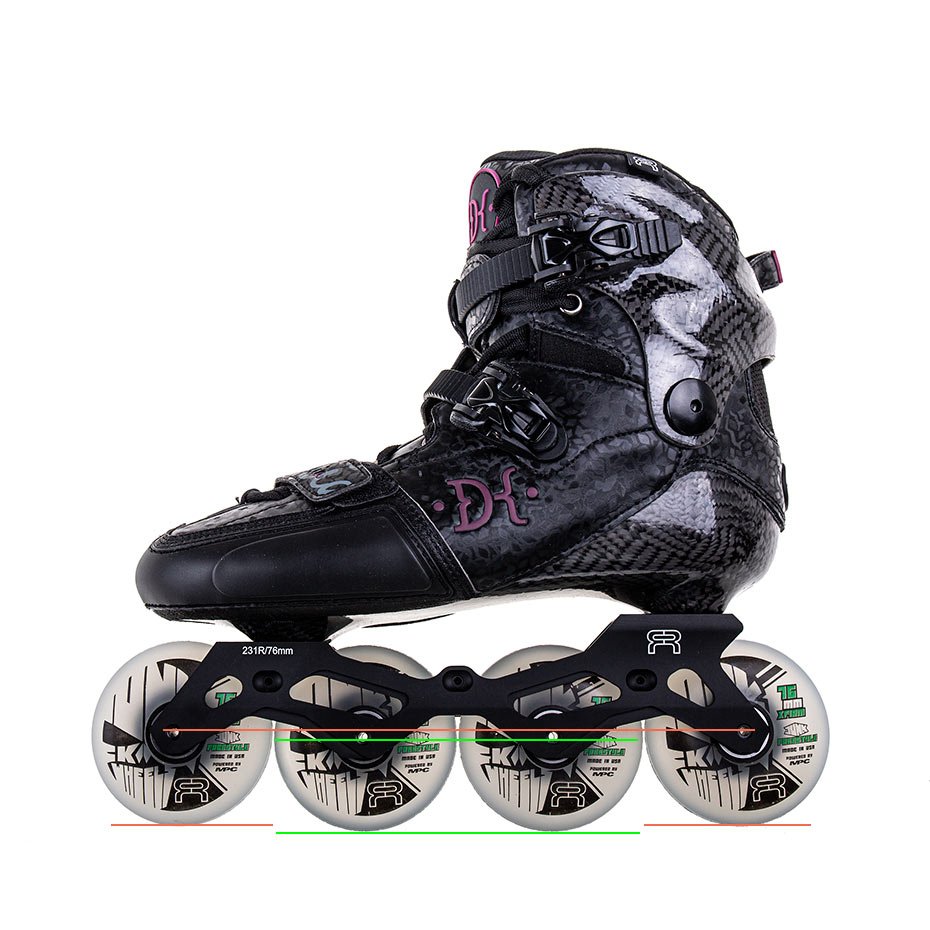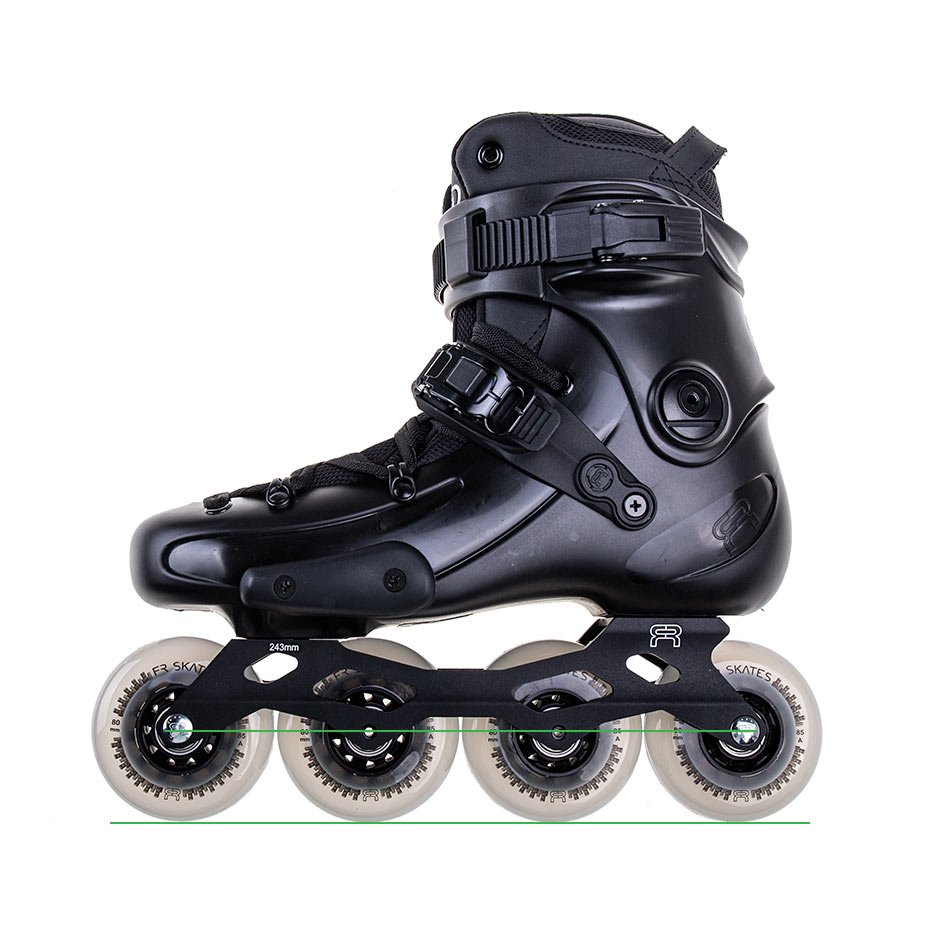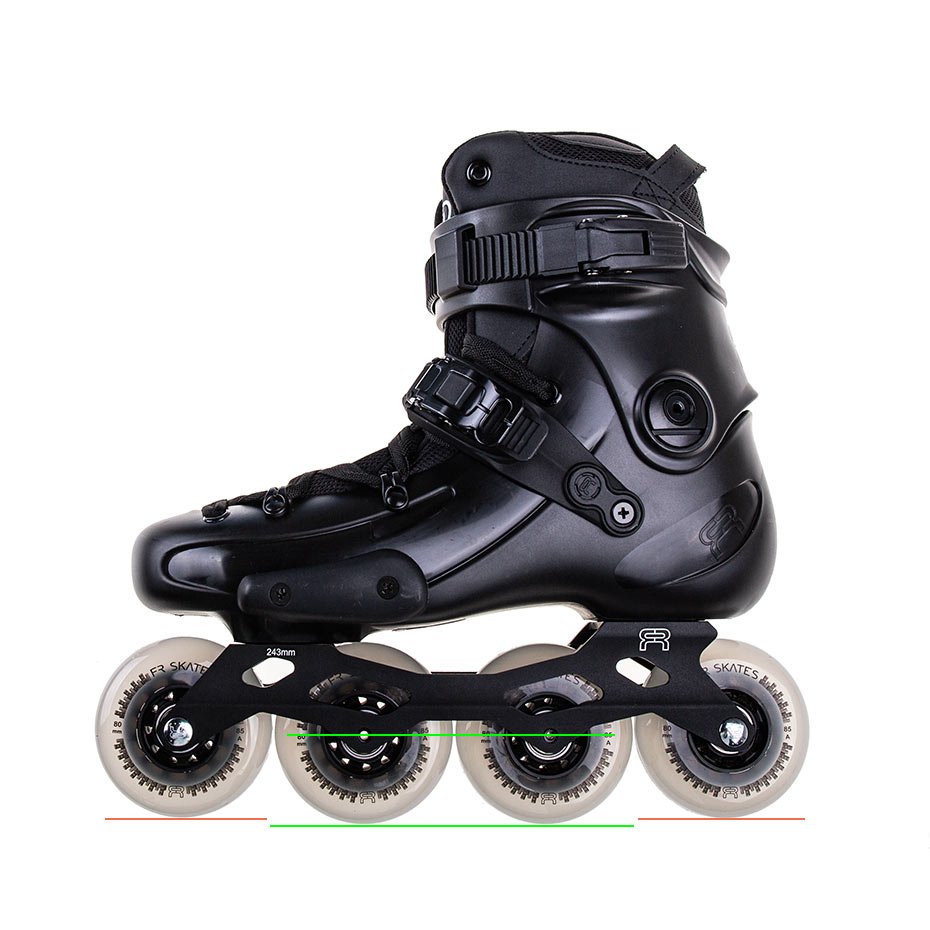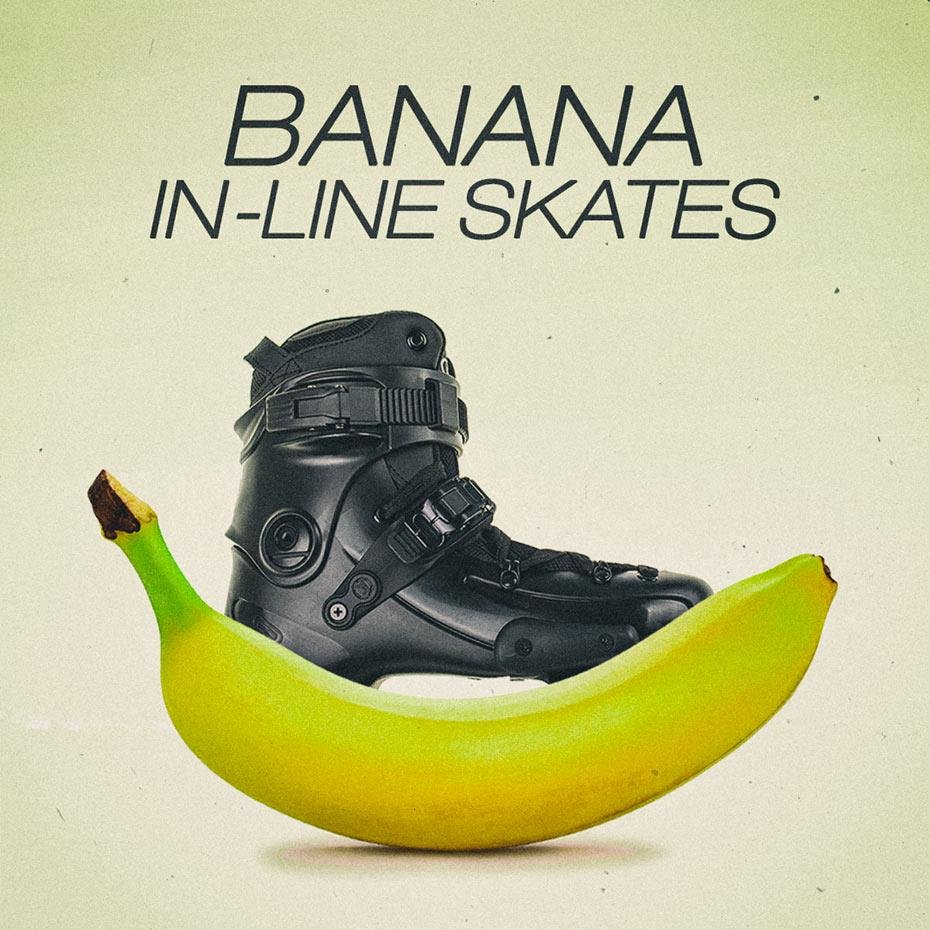Banana setup – what does it mean?
Surely you have heard people saying something along the lines:
“I skate on banana setup”
“I setup my wheels to banana”
Or something else, which includes wheels and banana.
So, what skates and this tasty, yellow, curved fruit have in common?
“Banana setup” means that out of 4 wheels in the frame, two outer ones are placed higher (usually by 2 mm) than middle ones – this gives wheelbase a curve resembling banana shape.
What is the point of banana setup?
The answer is simple – to increase manoeuvrability, which is used mainly in freestyle slalom. This is where the trend has started, too.
Skates with four wheels touching the ground are very stable. Raising first and last wheel means that at any given time, only two wheels touch the ground, which greatly increases how agile skates are, but at the same time decreases the stability. Nowadays literally no one in freestyle slalom uses flat setup (4 wheels down) any more. Speed slalom is another matter, as speed and stability are more important there than agility (not to mention that this style is now dominated by three large wheels setups).
Going back to subject matter, in the most popular frame lengths in four wheeled freeskates and freestyle slalom ones are:
219 mm – four wheels of 72 mm diameter
231 mm – four wheels of 76 mm diameter
243 mm – four wheels of 80 mm diameter

Frame length is adjusted to boot size – the smaller the boot, the shorter the frame. This allows for optimal balance and agility of the skate.
How to set your skates up with banana?
The first and still popular (among newcomers to the sport, mostly) way of doing that is using smaller wheels in outer positions:
For 243 mm frames we mount frames as follows: 76mm-80mm-80mm-76mm
For 231 mm frames we mount frames as follows: 72mm-76mm-76mm-72mm
For 219 mm frames we mount frames as follows: 68mm-72mm-72mm-68mm
So, we use 4 mm smaller wheels than what frame allows on the outer positions. This seems simple now, but wasn’t easy for skaters who used 219 mm frames at the beginning – there were no 68 mm wheels on the market.
This is when rockered (also called pre-rockered) frames came into play, in which the first and last axles are placed 2 mm higher than middle ones. This allowed for banana setup with four 72 mm wheels.

The side-effect of this solution was that bigger front and last wheel diameters have positively impacted wheeling tricks by giving better roll and more speed. Over time, longer frames have also appeared in rockered variety, giving skaters with bigger feet the same advantage.
As of today, you won’t find any specialised slalom skate in which banana rockering is achieved by smaller wheels in the outer positions. Everyone uses pre-rockered frames as stock option.
A lot of skaters, not only freestyle slalom enthusiasts, use banana setup for commuting or for example, skating to a quick session between cones. It is inconvenient to change the frmaes frequently, not to mention that it’s also not very safe.
Some brands, realising that hardboot skates often serve as entry-level freestyle slalom gear, equip them with adjustable axles allowing to choose between flat and rockered setups in one frame.


Freestyle slalom cannot go without banana rockering.
However, if you are starting completely from scratch with ambition to skate between the cones in the future, do not try to learn how to skate on such setup. The flat is way more practical for learning the basics on, as banana setup is much less stable which result in “swaying” back and forth if you do not have a high degree of control over your skates. This makes skating fast and landing jumps harder. There is halfway-through solution, though – called front rocker, where only first wheel is raised and other three touch the ground. It improves manoeuvrability but still maintains a decent degree of stability.


